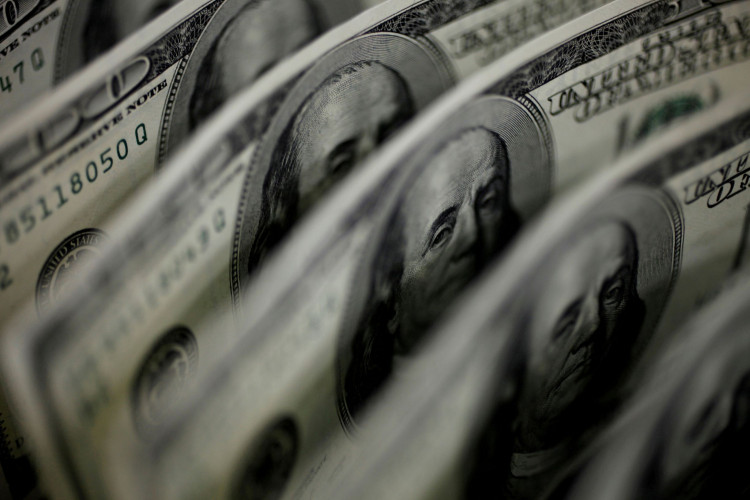Hedge funds are swiftly unwinding their bullish bets on the U.S. dollar, as the Federal Reserve may soon end its current interest rate hike cycle.
Data from the U.S. Commodity Futures Trading Commission shows that by June 27, hedge funds had reduced their long positions in the U.S. dollar index by over 80% compared to the week prior, falling to 5,196 contracts, the lowest level since March 7 of this year.
The U.S. dollar has been on a downward trend since peaking last September. In the first half of this year, the U.S. dollar index fell for four months. The market widely anticipates that as the Federal Reserve's rate hikes near an end and the interest rate differentials between the U.S. and other developed markets narrow, the U.S. dollar could experience further declines.
Federal Reserve Chairman Jerome Powell stated on June 22 that the U.S. may still need to raise interest rates once or twice this year. However, overnight index swap data shows a decrease in market bets on the U.S. dollar, indicating that hedge funds have factored in the potential for one or two more rate hikes by the Federal Reserve, and are now focusing on potential rate cuts starting in the first quarter of next year.
Vishnu Varathan, head of economics and strategy at Mizuho Bank, stated that while the market acknowledges the possibility of further rate hikes by the Federal Reserve, the narrative that the U.S. dollar has peaked has firmly taken hold. Hedge funds are preparing for the U.S. dollar to soften further.
Many believe that the Federal Reserve won't go much further with rate hikes, especially when compared to the European Central Bank. This is reflected in the degree of unwinding of bullish bets on the U.S. dollar.
Russell Investments said in its outlook for the second half of the year that the U.S. dollar has been trending lower over the past month, as investors anticipate the Federal Reserve's rate hikes coming to an end. Given the countercyclical nature of the U.S. dollar, if the market is confident that a recession can be avoided, the U.S. dollar may soften further.
Fundamentally, the continued slowing of U.S. economic growth after the end of the pandemic is a major factor dragging down the U.S. dollar.
Regarding the U.S. dollar's outlook for the third quarter, Nick Cawley, senior strategist at forex trading and analysis platform DAILYFX, believes that the U.S. dollar may fluctuate within a range due to data releases.
Cawley suggests that U.S. rate hikes have nearly completed or are completed, and the impact of the U.S. debt ceiling dispute on U.S. short-term interest rates is in the past. Other G7 countries may narrow their interest rate differentials with the U.S. (as the European Central Bank and Bank of England are expected to continue raising rates). This could continue to pressure the U.S. dollar downwards or at least restrain its further increase. The current "wave pattern" of the U.S. dollar index may continue, but volatility may also decrease.
Overall, the U.S. dollar's trend in the third quarter will be influenced more by other central banks' actions and U.S. domestic data.






